Decades of momentum leads to biggest night for AFL in Tasmania when new club launches
On the eve of AFL history being made, Sports Editor James Bresnehan looks at how we got here – including the ‘sliding doors’ moment in 1990 when the ‘Map’ pounded Victoria.
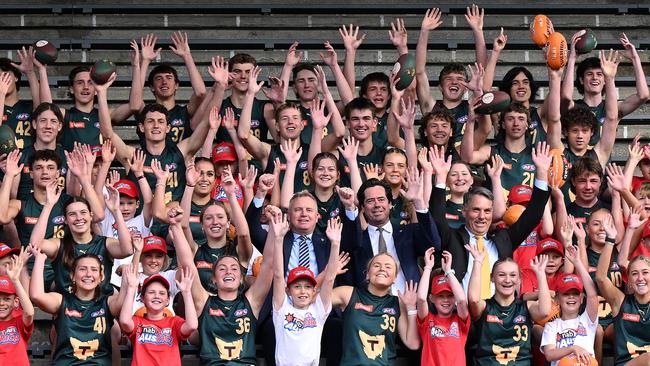
Sport
Don't miss out on the headlines from Sport. Followed categories will be added to My News.
After years of wanting, wishing and waiting, the biggest day in Tasmanian sporting history arrives on Monday when the state’s AFL club is launched.
As one of football’s Foundation States, generations of Tasmanians have believed the state should be part of the big time — I am one of them.
And with Tassie having provided bona fide legends like Darrel Baldock, Peter Hudson, Ian Stewart and my cousin Royce Hart, and more recently household names in Matthew Richardson, Alastair Lynch and Jack Riewoldt, rightly so.
That moment is here, and the Tasmania Football Club’s colours, nickname, jumper design, logo and general branding is about to be unveiled in a gala reveal at various locations across the state.
It has been a long time coming, especially for this farm boy from the Midlands, son of a champion, a former footballer, representative player for the both north and south, a long time football writer and now Sports Editor.
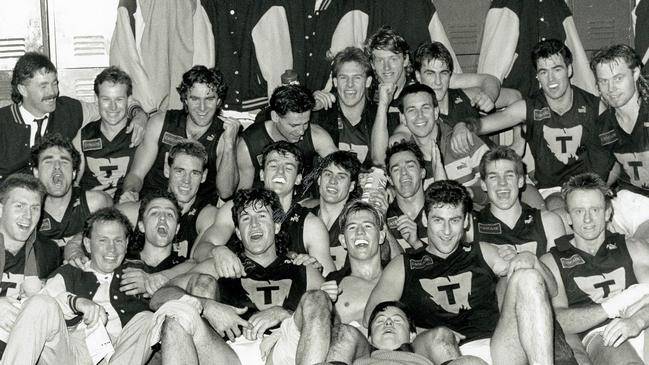
Looking back, I would say the Tasmanian AFL dream’s “sliding door” moment came on June 24, 1990, when 22 young men wearing the famous “Map” guernsey pounded Victoria in a State of Origin triumph now part of Tasmanian football folklore.
As a young reporter that day, the uplifting emotions sparked hope that Tasmania could one day soon join the big time and that we had proven our right to be there.
When state coach Robert Shaw called for Tasmania to join the AFL in the wake of that win, it started a chain of events that eventually led to the big day on Monday.
“Shawy” wasn’t the first to push for a Tassie team.
Former Clarence and state ruckman Bob Cheek, also a former Leader of the Tasmanian Liberals, floated the prospect in the mid-1980s.
In 1987, then president of the Tasmanian Football League, David Smith, made strong representations to the AFL for a team, and was promptly rejected by AFL CEO of the day, Ross Oakley.
Tasmania’s next chance came in 1992 when the AFL toyed with relocating Sydney to Tassie after the under-achieving Swans had accumulated $9m in debt, but the catch was a $4m annual licence fee that was rejected by the state football’s governing body of the day.
In 1994, Hobart business leader and TFL boss Bob Gozzi and his eventual successor Michael Kent led a push for a Tasmanian team to join the AFL playing at a new stadium to be built at the Hobart Showgounds, cost at the time $34m.
That was torpedoed by Oakley and his AFL off-sider Ian Collins.
“They wanted us to have a team from the north and a team from the south playing in the VFL, and that would eventually be a pathway to the AFL,” Mr Gozzi said.
That’s when the Tassie Mariners under-18 team was born in 1995, inaugural coach Chris Fagan, now Brisbane Lions head coach, leading a team is rising stars, including Brendon Bolton (Carlton coach 2016-19), Brodie Holland (Fremantle 36 games, Collingwood 119 games), Russell Robertson (Melbourne 228 games, 428 goals), Ben Beams (Melbourne 23 games) and Patrick Wiggins (Western Bulldogs, 12 games).
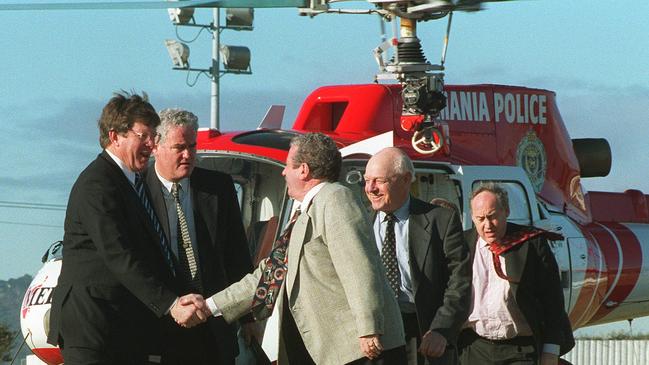
In 2001, the Tasmania Devils debuted in the VFL while the AFL “void” was filled by Hawthorn bringing games to Launceston — a relationship that took hold and has flourished to this day.
The 2008 AFL expansion with the 17th and 18th licences going to the Gold Coast Suns (commenced playing in 2011) and the Greater Western Sydney Giants (2012) was a slap in the face for Tasmania.
I was hopeful that the political muscle of Premier Paul Lennon could right that wrong when he led a team to Melbourne to lobby AFL House for a 19th licence, backed by confectionery company Mars committing $4m to being the club’s major sponsor.
This time, Andrew Demetriou (AFL CEO 2003-2014) shot us down and added insult to injury vowing Tasmania would never have a team under his watch.
“That was after my time [in football administration] but I remember those comments,” Gozzi said.
“When Gill [McLachlan] took over, he was always sympathetic to a Tasmanian team and he as much as anyone else drove that forward.”
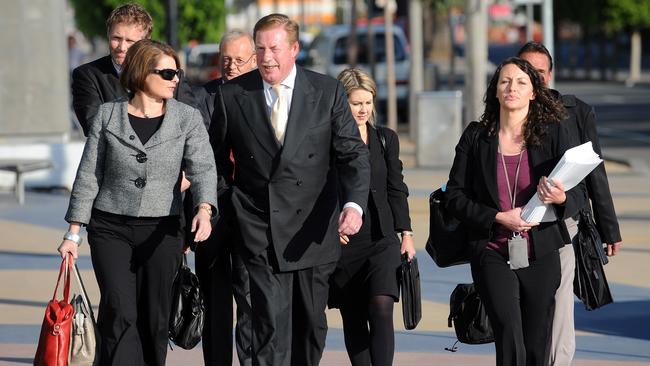
In 2018, a steering committee was formed to examine football in Tasmania and consider a solution to a lean period for the game across the state.
Former AFL Tasmania CEO Rob Auld, ironically now the AFL’s head of game development, unsuccessfully tried to kill the state’s premier competition, the State League.
His replacement Trish Squires described Tasmania’s desire for a stand-alone AFL team as a “distraction”.
In 2019, the Tasmanian AFL Taskforce was created, headed by Virgin Airlines co-founder Brett Godfrey, which included now Tasmania Football Club chairman Grant O’Brien and TFC board member James Henderson, and Julie Kay, who was appointed by the TFC to support and guide the development and growth of female football in Tasmania.
The Covid-19 pandemic through 2020 stalled Tasmania’s licence bid, despite a strong business case being presented to the AFL.
In 2021, Premier Peter Gutwein got tough, refusing to negotiate an extension of the Hawthorn and North Melbourne deals – set to expire in 2022 – until his government received a firm timetable for the introduction of a Tasmanian team.
The conclusion of the Carter Report, presented to the AFL later that year, backed Tasmania as a sustainable ground for an AFL team.
In 2022, Mr Gutwein revealed plans for a roofed stadium in Hobart, a financial report backing a sustainable Tassie team was released, and McLachlan took up the fight in earnest by lobbying the 18 existing teams until an in-principle agreement was reached in November.
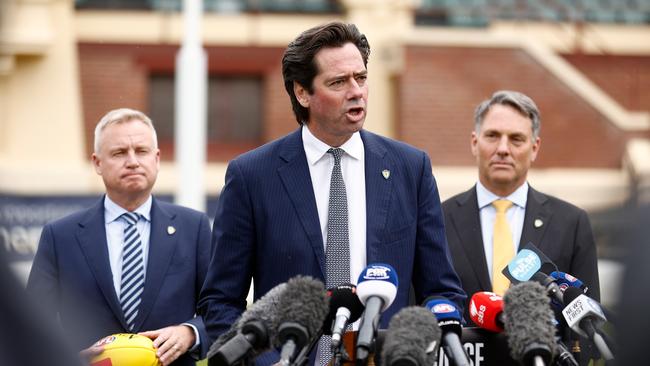
After a string of meeting, phone hook-ups and behind-the-scenes negotiations, on May 3, 2023, McLachlan and his AFL heavyweights, the state government, and a who’s who of Tasmanian football converged on North Hobart Oval for the official announcement that Tasmania had been accepted as the AFL’s 19th club.
“It’s a big day for football,” McLachlan told those gathered.
“I want to pay great credit to the resilience of the state government and passion of football people in this state that have hung in. The building blocks are now substantial and this team is going to be a great success.”
The final piece of the puzzle is a new stadium as the centrepiece of the AFL and AFLW teams, as well as the state’s under-18 boys and girls teams, and men’s and women’s VFL teams.
The 23,000-seat roofed stadium proposed for Macquarie Point has become a heated debate, but Gozzi said it shouldn’t be.
“The reality is, if you look at Subiaco Oval [WA], there was a hell of a fight about whether to continue playing there when they were planning to build Optus Stadium,” he said.
“Where Subiaco was there’s now a parkland and they’ve got the magnificent Optus Stadium with all of the impact it has on the economy.
“It was the same with Adelaide. There was a hue and cry about upgrading Adelaide Oval, and as soon it was up and running all the critics fell silence.
“There’s no doubt in my mind that once we get underway with the stadium here, it will have broad support.
“It’s not going to be just a football stadium, it will support a whole lot of other activities and benefit the whole of the state’s economy.”
Monday’s launch is a celebration of the years of work by so many people who believed over the years and on whose back Tasmanian football will take its massive “screamer” which will enable future generations of Tassie boys and girls to kick their own goals.




